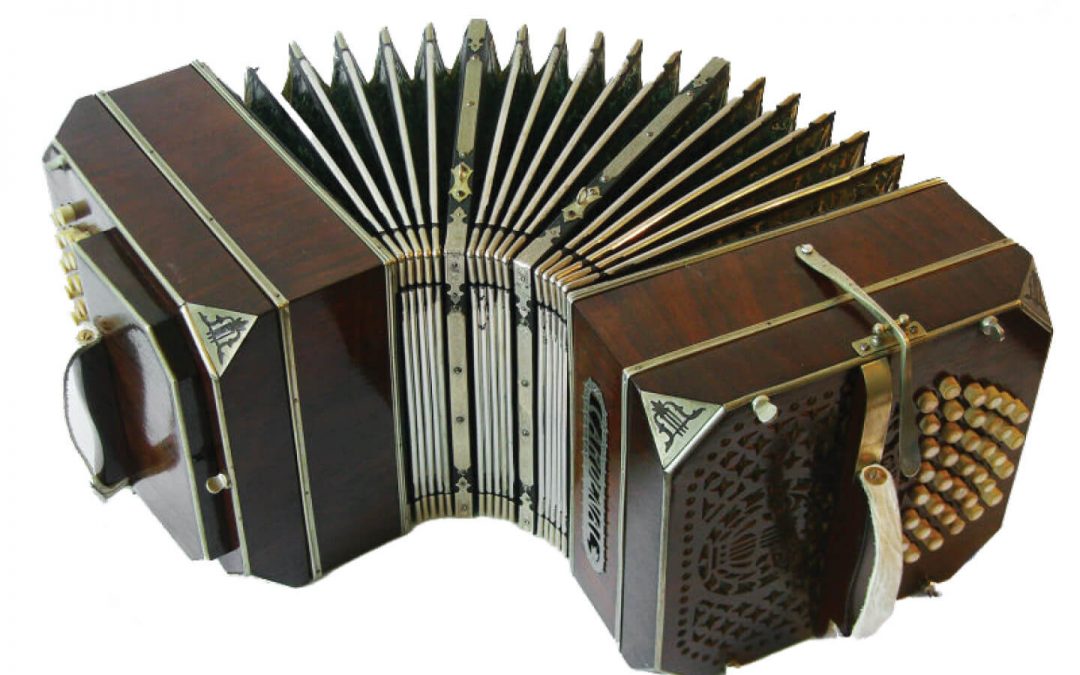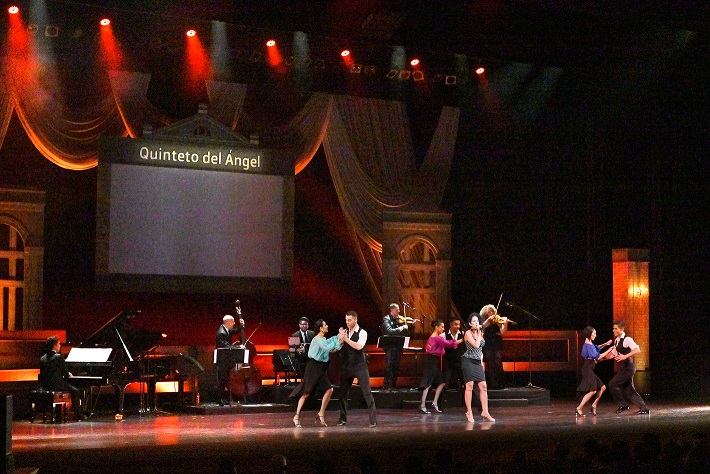
A tango orchestra typically consists of bandoneons, violins, piano and double bass, in addition to guitar and drums, accompanied by singers and dancers of the tango tradition. Among these instruments, the bandoneon is perhaps the most key instrument in producing the authentic, emotional and nostalgic sound of tango. This unique accordion-like instrument with buttons and bellows was originally developed in Germany during the 1850s for use in small churches that could not afford organs. It was also used as a mobile organ to accompany religious services on the road. It is believed that German immigrants brought the bandoneon to Argentina around 1870, where the instrument was quickly adopted into the nascent genre of tango in Buenos Aires at the end of the 19th century. The German-made bandoneon originally had 60 notes spread over 30 buttons as its keyboard, but by the beginning of the 20th century, it rapidly changed to adequately suit tango music. As a result, a sophisticated 142-note version with 71 buttons had become standard in Argentina and Uruguay. Because the buttons are rather illogically organized, layed out on both ends of the instrument, each button creating a different pitch by opening and closing the bellows, the bandoneon is extremely difficult to master. However, in the mid-20th century, beginning with Aníbal Troilo—a leading proponent of the bandoneon and one of the greatest masters of it—a number of notable bandoneonists made a sudden appearance on the tango scene. They developed zealous and sophisticated techniques, creating the “Golden Age” of tango with their unique modern tango compositions. Thus, the bandoneon became the ultimate instrument exemplifying the distinctive voice and soul of tango.
Since the Min-On Tango Series was launched in 1970, Min-On has proudly presented a performance of renowned Argentinian tango artists through a national Japan tour every year. The impressive lineups have included legendary bandoneonists and young virtuosos from the latest generation of bandoneon players. They include Leopoldo Federico in 1976, Carlos Lazzari in 1982, Nestor Marconi in 1991, Julian Plaza in 1996, Carlos Buono in 1999, Carlos Galvan in 2003, Victor Lavallen in 2010, Roberto Alvarez in 2011 and young Facundo Lazzari in 2015. The Min-On Tango Series has showcased masters of the bandoneon across four decades of international tango history.

In 2017 for the 48th installment of the series, Min-On invited young bandoneon master Horacio Romo and his up-and-coming sextet for a nationwide tour, traveling to 25 cities across Japan from January 24 through March 8. Horacio Romo’s virtuosic performance of the bandoneon mesmerized thousands of tango lovers across Japan.







